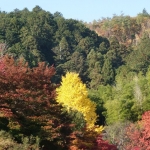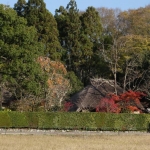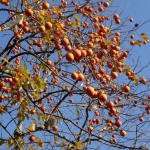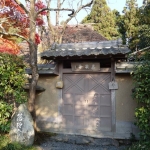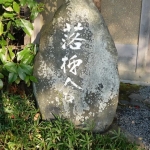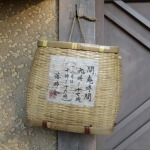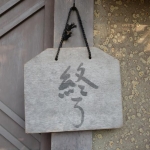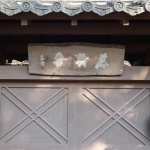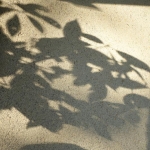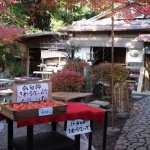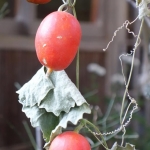Rakushi-Sha
Consider me
as one who loved poetry
and persimmons.
–Masaoka Shiki
Rakushi-sha, the “Hut of Fallen Persimmons,” is a famous landmark in the world of haiku poetry. It is a simple hermitage, its walls made of clay, its roof of thatch, in what was once a remote part of Kyoto.
The hermitage was created by Mukai Kyorai, chief disciple of Matsuo Basho, the great master of haiku. Kyorai went into seclusion at the age of 27, and a few years later built this retreat.
The house takes its name from an occasion, recorded in Kyorai’s works, when he woke up to find that the persimmons of almost forty trees on his property had fallen in a storm overnight.
Basho himself visited Rakushi-sha, and wrote his famous diary “Saga Nikki” during his stay there. It closes with a famous poem which evokes Basho’s sad feelings of leaving his friend’s home:
“Summer rain on the wall traces of torn poem cards”
In the house are tasteful monuments to Kyorai and Basho, as well as an old straw raincoat and hat set to hang on the wall in a gesture indicating that “the host is in.” Kyorai’s grave is outside on the grounds. Many people come to Rakushi-sha to savor its tranquility and to try their hand at writing some haiku, including contemporary masters of the art.
On the grounds are stone tablets inscribed with haiku, while ink-brushed poems hang on the walls inside.
Kyorai was also the poet who, after Basho’s death, continued to write in the style Basho practiced and taught.
Haiku is a short poem which consists of 17 sounds arranged in a pattern of 5-7-5. Since ancient times, a large number of haiku poets called haijin have written haiku poems that capture a moment of natural beauty or a scene that crossed their mind. And their readers have been fascinated with the beautiful words and sounds of those poems.
“The box placed in the garden is a haiku box. The poems posted in the box will be reviewed and the selected ones will be published on Rakushi-sha’s seasonal magazines.”


